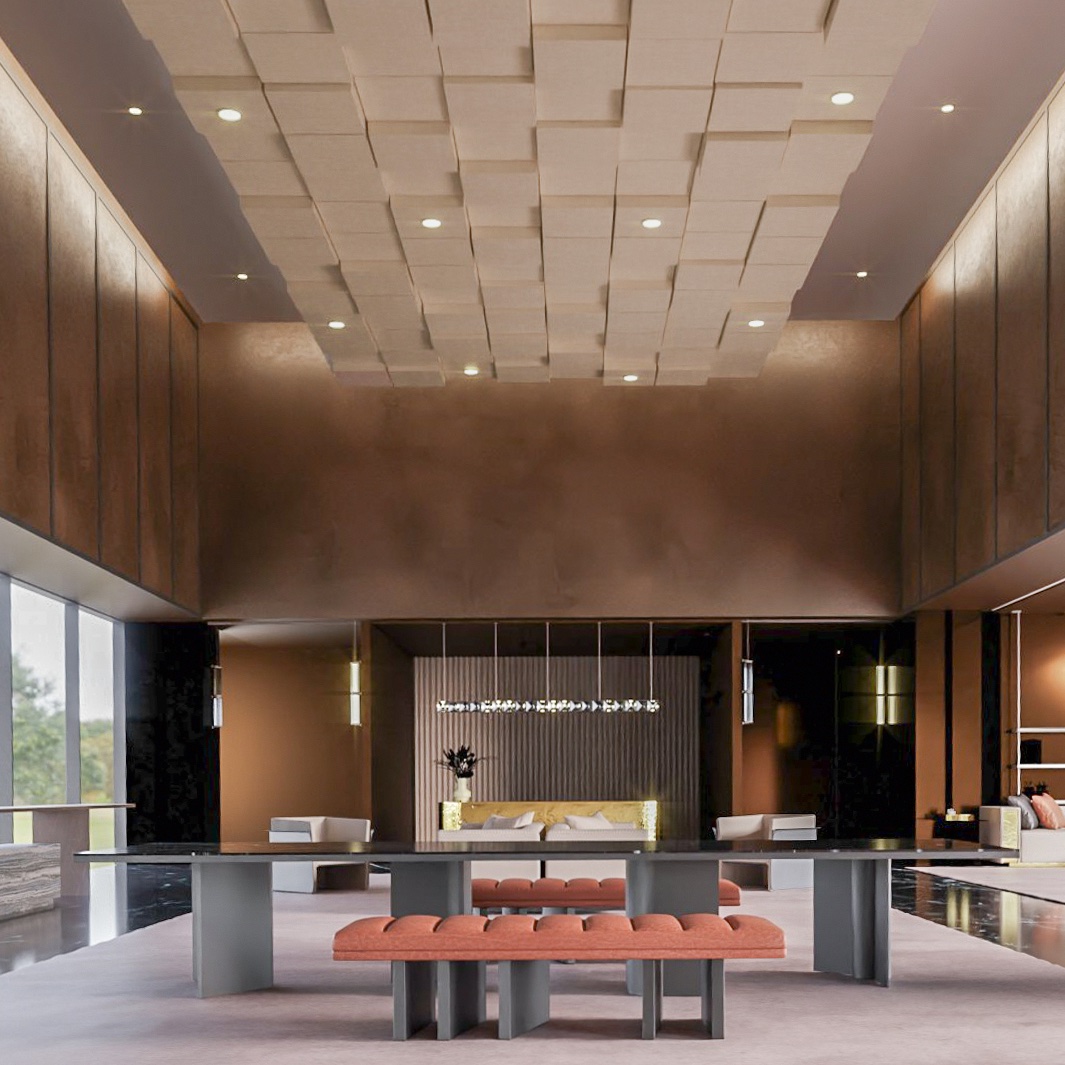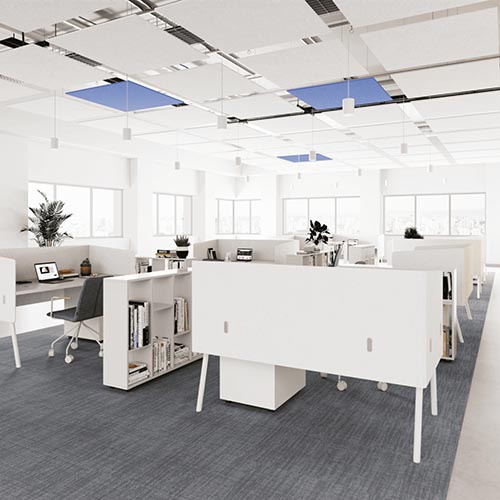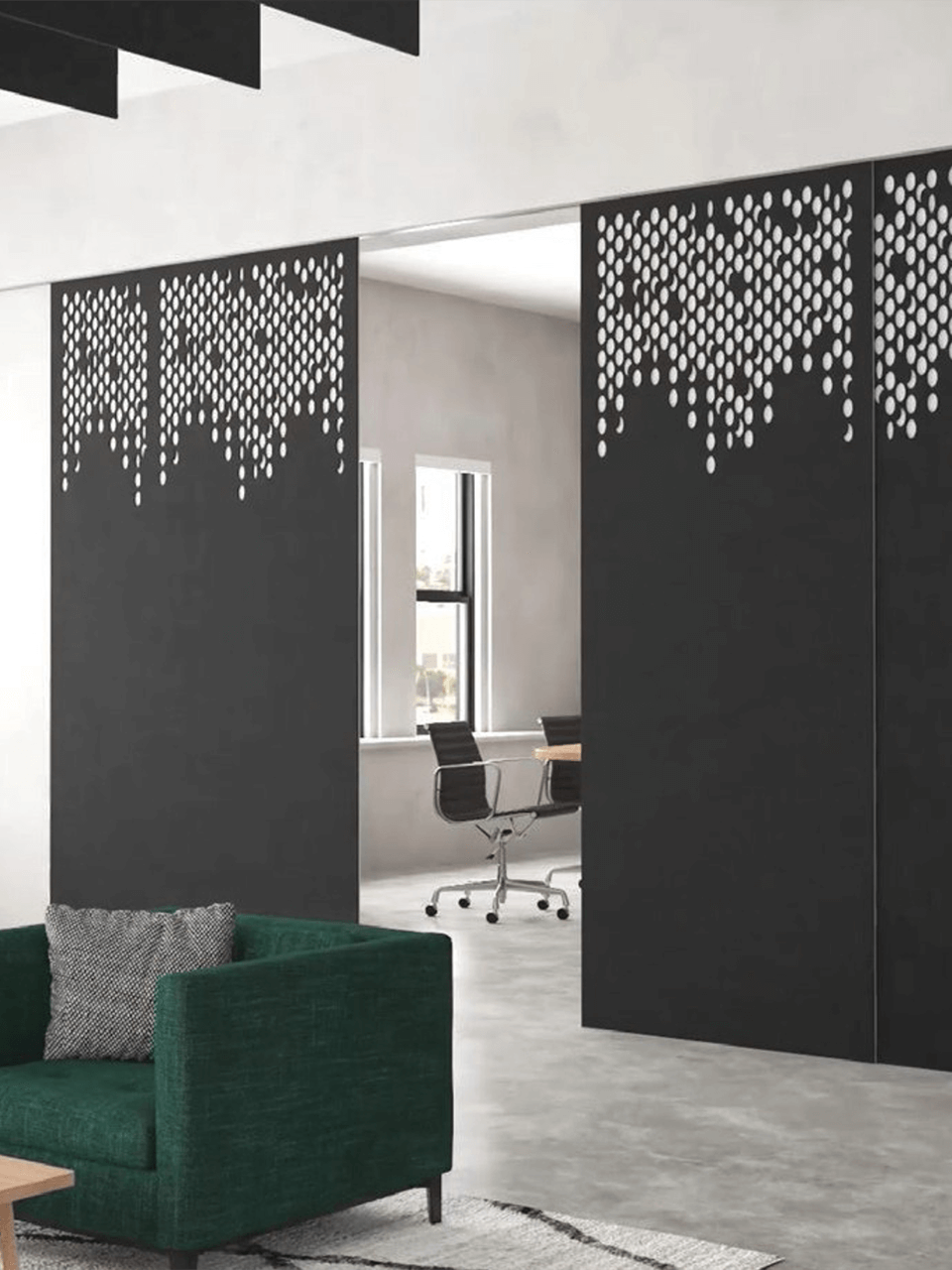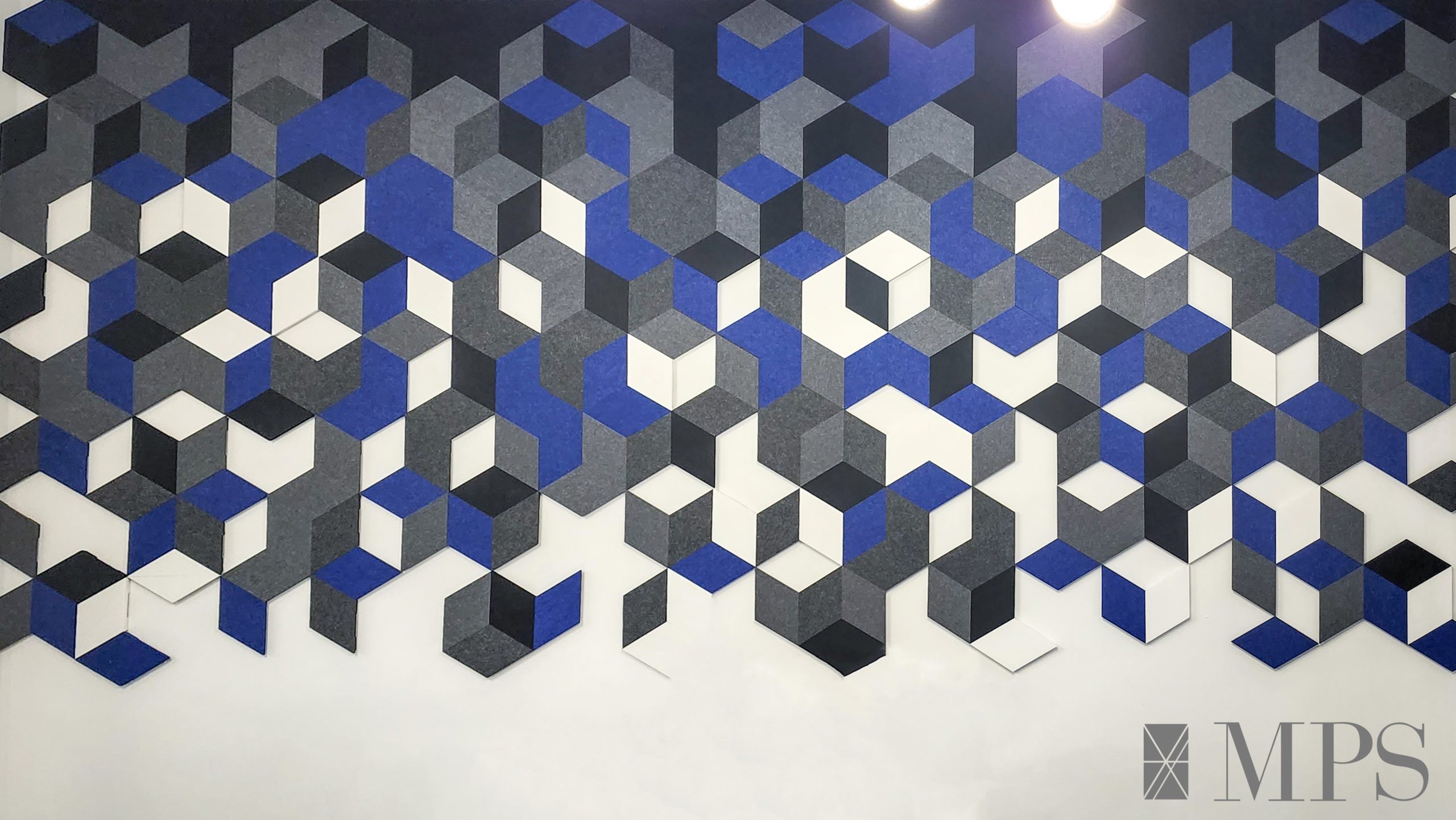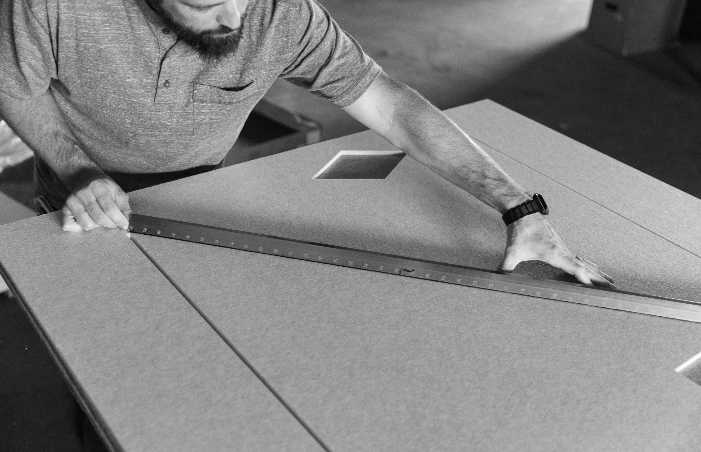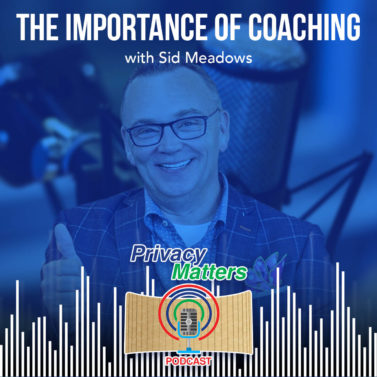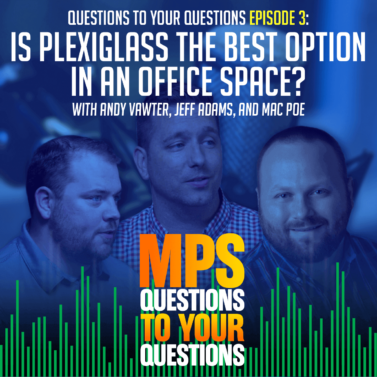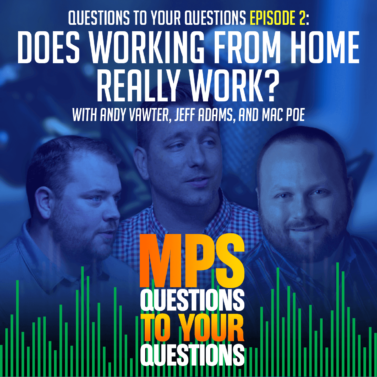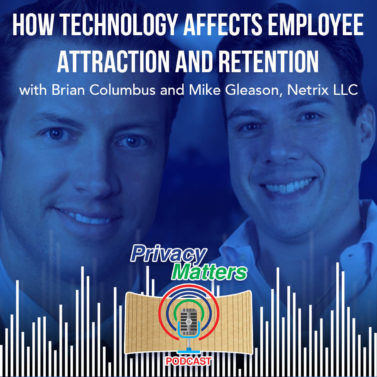Andrew: [00:05]
Welcome to Episode 9 of Privacy Matters.
I am Andy Vawter your host. And today I’m very excited to have Marilyn Dennison with us from the DLR group. She is an educational specialist and we’re going to dive into her experience and what she does for in her current role and just how I think you’re transforming potentially the education industry one person at a time. That’s pretty exciting, but thank you for being here. We’re gonna explore a lot of things in your current role and things that you’re doing. I wanted to start with kind of backing up a little bit, talking about how you ended up at DLR and in your current role because you haven’t been doing this role, but a couple of years. Is that correct? (Marilyn: About a year and a half.) About a year and a half. So before that, it was 100% education. Without getting too into detail, you’ve been in a lot of different roles, mostly administrative, correct? Principal, central office, superintendent style roles. Yes. I think it has to go back to your initial kind of your start, right. You started and you were telling me before we started this that you implemented a unique professional learning model called Great Expectations, no doubt named after kind of famous book I would imagine. I don’t know. Not named a play on words there, but you started that and then you even mentioned that you ended up getting your doctorate around that. Correct? Could you give us a little more information, kind of how all that got started and tell us really what that is, what the great expectations are?
Marilyn: [01:58]
Great expectations are probably the most transformative professional learning model that I had come across and experience both as a teacher and administrator and then helping my own teachers find their way in teaching and learning. A great expectation is unique in the fact that it brings along the cultural aspects that every school needs along with the academic side. So that’s not two different programs. It’s one program. It’s really more about have a way of being, how to really instruct our kids that in bodies, social-emotional learning as we’re continuing to develop their skills and knowledge. It’s just a full program and from start to finish. I think it helps teachers feel a little more connected to the kids, but less stress at the same time, which is kinda hard to do an education. Which is what we need more, less stress, more of, less stress.
But anyway, I started as a teacher and when I learned Great Expectations and then I became a principal and I wanted to open a campus one day, what was one of my desires or goals. And I wanted to open it with everybody utilizing the great expectations, professional learning model. I got an opportunity in spring, Texas opening at the campus. Of course, there’s no funding. I had to go out and find the funding, but I got the funding where every person that had anything to do with my school, including the best drivers, custodians, food service representatives, secretaries, anybody that had anything to do in the school was trained in this model. So our school, and that was the first time a school was fully trained.
Andrew: [03:44]
That’s very unique. Yeah. Cause usually it’s just the teachers and principal.
Marilyn: [03:48]
Yeah, the principal. But that’s it. So it was a phenomenal model and since then it’s been replicated over and over. We became a model school at that school. My superintendent was really happy with the results of great expectations. He was also impressed that an educator or an administrator is really looking about what is happening inside the building was more important than actually just building this really pretty building. So he wanted more of that. And then I only, I was only on that campus a couple of years when he invited me to take a role at the central office. I became the executive director in spring so I could help other schools as they were embodying this new change.
Andrew: [04:30]
Excellent. So yeah, you had a good idea that worked and they wanted you to help. Influence and implement that in other, other places.
Marilyn: [04:37]
Right. And it was helpful that was my research in my doctorate and it was proving when I did a case study on this, it was showing that it improved student attendance, teacher retention, behavior issues that lowered those. In fact, a lot of schools went down to hardly any behavior issues. Of course, what we always measure is the achievement scores. So those were higher as well. So it’s a very well rounded.
Andrew: [05:04]
Well, the first three things are actually like as a former teacher myself, it’s like those are the things that really matter. And then those test scores are great too. But yeah, if those other things are improved really matters. So then you came to Capella and had another opportunity to open the school again. Right. And, put this model to the test again.
Marilyn: [05:31]
So in Capella, I was the assistant superintendent for curriculum and instruction at the time. We had a very transformative superintendent that really wanted our school to look different and run differently. So the teaching and learning were going to transform. He really was looking at ways to help our students be more prepared for their future, not our past, which we’re really good at educating kids more for our past, but our jobs are changing, the careers are changing. So he was really looking at what is the ways to better prepare our students for their future. So, I had a great experience working with he, he had me as one of the leads working with our facilities people, which typically it’s the facilities side of the school district or the school district that will take the lead on opening a campus. But he put it through the curriculum side. So we work together with facilities. And it was more important was that we had our architects right beside us the whole time. So we put a design team together and went through design thinking activities for what do we think the future will hold and what would be the best way to prepare our students for that. So that influenced our environment. The building looks different than even at their buildings. It’s laid out differently. Our students function a little differently in that school and it is highly successful. It’s Richard J. Lee and an elementary school in Capelle.
Andrew: [07:04]
Okay. And that becomes a showcase school for this model in other places? I’m guessing
Marilyn: [07:08]
We are. Yeah. We toured people through that every single week, several times a week and they still, it’s been open five years and it’s, I think this is going on their sixth year and it has not slowed down. It maybe has picked up (Andy: hire a tour guide.) Yeah. Even from out of the country people are coming to see this, how it’s functioning.
Andrew: [07:31]
Excellent. Great School. Congratulations on that. That’s really exciting. So then that experience, you mentioned briefly that is connected with the architect from as far as designing the space. Is that where the relationship kind of started to get you into your current role?
Marilyn: [07;48]
It sure did. That was the exact thing that happened. I worked alongside an amazing architect, her name is Taryn Kinney, she works now for the DLR group. And as we were going through this process, we were realizing that this is a process that can be replicated in other districts for other schools who are really wanting to transform teaching and learning and their spaces. And she had asked, would you be willing to come work for the DLR group? And so that we could scale this process across the United States. And, I jumped at the chance. It’s just a fun process. But the DLR group also believes what happens inside the building is as important as the building. And they do design some beautiful buildings, but they know that that’s only one part of it. It has to change what’s happening inside and it has to work together.
Andrew: [08:37]
Well, I obviously believe that because they paid you to come. Can you come to do that? Right? So that means they’re investing in making that a reality. I’m not just saying we’ll build you the building. You guys figure that, right?
Marilyn: [08:52]
Yes, we partner with them and we’ve created a service, what we call BOLD, which is Bridging Organization Learning and Design in this process is the change model that really helps districts vision, not build any gaps from vision all the way to implementation and will stay with the district or a particular campus even after it’s open for a year if they would like us to just to help support and make sure things are functioning the way that they would like it to how they envisioned it.
Andrew: [09:20]
That’s great. That’s great. And so your role is not necessarily in sales or design, your role is that the bridge between the school or the district and what their goals and wants are and you worked for the company that basically designs that space so then you are perfectly suited to play on both sides of that.
Marilyn: [09:43]
I introduced myself to districts that I’m still an educator. I just don’t have unfunded mandates to deal with. I have a little less stress. My stress now is catching a flight to the next district to work with. But, yes, that I’m still the educator on the, what they call me as the educator expert for DLR groups. So I do help bridge the architects with the districts than the campuses.
Andrew: [10:09]
That’s great. So what do you like about your current job? I can tell you a lot.
Marilyn: [10:15]
I love it. You don’t, one of the unique things that I get to do is travel all over the United States, some internationally to meet people who are really trying to do the best for education that they can do. And it’s been fun for me to meet these people who are so inspiring and energetic and happy about trying to do something different with their different environments or their teaching and learning models and to hear their aspirations and how they want to go about it. And then I tried to figure out how I can support them in any way that they want to go. Meeting people has been great. Traveling and seeing, you know, these different schools and environments have, has been great. But knowing that I am hopefully impacting children for the future is just the highlight of my job. It’s all about the kids. As a teacher, as a principal and even in my role now it’s all about the kids.
Andrew: [11:19]
Okay. So since you love your job so well, what has been, what would you say has been your recipe for success in this role? I’m sure there’s a lot of things, but you know, if you could narrow it down to the key points that you think have really helped you succeed here.
Marilyn: [11:36]
You know, I go back to my years as a teacher and think about how I felt. I was successful there and it’s because I had a vision or I helped students understand they’re why I wanted them to tap into or I wanted my learning experiences for students to tap into their interest. And passions and either identify their strikes or develop their strengths and so that they can then come up with the answers as to what is important to them. So kind of performance, maybe mastery or looking at things differently. So I’ve taken that more to adults now that as principal or assistant superintendent, it’s still the same thing is helping people discover their vision or see a vision clearly, helping them work within their strengths and their passions and interests for the outcome that we’re trying to achieve. Then you take that to initiatives like that we’re doing now with DLR group and part of our services as bold is really again, helping define that vision and what are those steps that you need to put into place for that vision to be successful, playing in your strengths and your passions and interests so that we then have an outcome. So I think it’s really kind of just following that for me.
Andrew: [13:02]
Sure. Yeah. Let’s, I love the way you said that, cause I was relating when I was a teacher and just thinking about some of the challenges I had and you know, I taught seniors, so they would come in and you weren’t gonna, you know, it wasn’t like kindergartners that you get to mold these young minds, they were kind of molded by the time they got to you. So, I taught economics, so like they’d walk in and roll their eyes, or my favorite time was the parent-teacher conferences because the parents would walk and be like, I hated economics. And you’re like, oh, well I’m sure you’re really helping little Johnny, you know, get up for coming to my class. Yeah. So, but so I would, I would take that and then say, okay, well what do they care about? What’s, so I would try and hit different things that hopefully would get their minds thinking about it. And usually, money does that with most people. So like, you know, we talk about money and things like that, that would interest them. But, it was similar. So I was just thinking about that similar way. I had to try and motivate these kids, find things that they care about and are passionate about and then just kind of drill down and get into that.
Andrew: [14:04]
And nothing’s changed now as an adult talking with clients and other partners and things like that, it’s always what do they care about? What are you passionate about and how do I help you? How do I help you get to where you want to go. How would you describe yourself as a person?
Marilyn: [14:24]
So I was asked that one time, how would I label myself or what would I call myself if I was not called an educator? And I thought about it for a little while and it came to me that probably coach would represent me. I think I take things down to more of a minute level or a smaller level and sort of build up from there. So you go back to the basic step and move up no matter what problem it is or who you’re working with or what challenge it may be. Start looking at the steps that have to be in place to achieve this big step. It doesn’t ha doesn’t hurt that I was a coach. I’ve said gymnastics coach for a mile 21 years, that’s gonna age be a little bit and it’s the same thing if, you know, whatever skill we were teaching, you have to teach the first level and build it up so that it, you know, you’re, you’re getting to escalating to this big, big success or big step or big achievement. I also like to find strengths than people maybe try to identify where people might not see that normally in themselves and help encourage them to become better. In the Gallup strengths finder test that we’ve done at school. My top strength is maximizer and maximizer is somebody who likes to take something that’s good and make it even better. So it’s always looking for what’s the next great step, what’s the next thing we could do? So I find that and helping people as well, just kind of naturally, it’s not something that I set out to do. I just kind of do it.
Andrew: [15:56]
Well, I’m hearing that. I would say that’s also what helps make you successful in your role, if you’re trying to take the design of a space and help with the overall goal and philosophy and vision of a school like that’s perfect because now you’re trying to maximize the potential of each side to make sure the end result is a building that meets the vision, but you’re already back helping them. What is the vision and how do we elevate that too, you know, it just, it all kind of seems like it connects really well together. So let’s shift a little bit into the industry and a little bit of what you’re seeing. Cause you’re traveling all over the country meeting with school districts and, and I’m likely teachers, do you meet with teachers as well in the vision stage? I’m sure of getting feedback.
Marilyn: [16:46]
There’s yes. Even when I meet with students, so we have a lot of stakeholders.
Andrew: [16:51]
So you’re getting to experience students on up to superintendents and school boards even at that, at that level. So, how has education changed in recent years, both as you are an educator for many years? So you saw a change but also even more recently. How is it changing?
Marilyn: [17:09]
So I think there’s a lot of things that have not changed, but what really is changing is the rapid pace of change. I think that sounds funny, but I think change is happening faster. I think technology is really the catalyst for it. We’ve in education we’ve always talked about how we needed to really personalize education and we need to do, provide more problem-solving. We’ve talked about that for many, many years, but I think the technology has really pushed us into that realm of allowing students to be more creative on their device in it as well as teachers, not just students, but we’re working together, allowing them to communicate in different ways and problem solve. Education is no longer about memorizing facts because you can just Google those now. So it’s really about developing those skills that I can take into my work life. You know, when, when you graduate or even to college, how, whatever your path is to utilize the knowledge in either new ways or apply what you do know into another format, another content.
Andrew: [18:25]
I remember when I first started, I was 20, I guess I was 23 years old, 22 years old, somewhere around there as a teacher. And I was teaching geography to freshmen and I taught it the way I took geography just a few short years before then, which was colored maps and memorizing the countries on the map yet a blank map. And you had to put the countries and capitals down. Yeah. And, last year I taught geography was 2012. And even by that point, I was really struggling with, I only taught like one section of it, but I was really struggling with answering the question of why do we need to know this? And they called me coach, right? So I was a kid, I coached football coach, why do we need to know this? And I was like, you know, I don’t have a good idea cause I’m on my phone here, we can zoom in and we can see all the countries and you never actually have to, those are not facts that you need to do any longer. Yeah. So then I was constantly challenging myself to up my, OK, how do I apply this to what does matter and what do they need to know about it?
Marilyn: [19:32]
It’s a different way to design lessons.
Andrew: [19:34]
It’s just the short and I’m young, right. So that was, I was a young man and I was 30 years old trying to explain to kids why the way I learned it, 12 years earlier was probably not the way they need to be learning it.
Marilyn: [19:46]
Yeah. And that’s the same way I learned it and I am okay.
Andrew: [19:48]
That’s a really good point about how rapidly it’s changing because technology has been changing, but man has it just changed our lives very recently. So, I agree with you. That’s what’s changing. What is staying the same, cause you did mention many things are staying the same.
Marilyn: [20:11]
Kids, you know, students or everybody has their unique needs and that has always been, that hasn’t changed. Maybe some of the needs have changed, but the fact that we all are unique individuals will always remain and needed the need to meet the needs of each individual child that hasn’t changed and probably won’t ever change. I think also this funding for education has always been a problem and that has not, I mean that was an issue when I was teaching and then at every level in education, but seeing that across the United States, it’s a struggle for people who are visioning new things to not really have the support financially to really make a change. And then, of course, high stakes testing, it hasn’t changed, unfortunately. And then, of course
Andrew: [21:07]
So they’re still required to have all these tests done and perform at a certain arbitrary level.
Marilyn: [21:15]
Yes. And then you’re held accountable to kind of some false means, you know, they’re not really the true measurements that we need to be held accountable for.
Andrew: [21:24]
So when you look at from an architect standpoint and then the company you work for. I would imagine a lot of what you’re doing space planning and utilization of space and workflow and trying to design that in conjunction with how students learn. How does space planning really help improve education? I mean from your perspective and from what you’re seeing. Are there tips that you could give us or things that you could talk about that seem to be changing the way people think.
Marilyn: [21:59]
This is one of my favorite topics and I think that’s why it’s been so exciting to be in this new role with the DLR group. Space does make a difference. You know, as adults we like to go to Starbucks or our workplace because those places are inviting and we feel comfortable in those. And we want to go there to set up our computer and do some research or work or whatever it may be. I think it gives our brains a place that is inviting to come work. You know, it allows my brain to come to play with me because you just feel good. Well, our education system should be the same way. Our kids should be able to go into our schools and really feel good when they walk in. Instead of the box rooms with clunky chairs set up in rows where the teacher imparting knowledge at the front, there’s a front of the room.
Why not open it? Some of those spaces where they can be made into a whole group or divided up into small group collaboration spaces and then allow for some individual, space as well. So it’s very flexible and adaptable and architects are designing some amazing ways to do that where it can be changed very quickly into those different environments that allow the teacher to provide more inquiry-based learning where they become the facilitator and the students have more ownership over their own learning. And, might get more excited about geography, and have fun projects that they can do and work on. You know, either alone or together. However, it may be present out there information to show that they really understand it and maybe even have ways to apply it in different ways all through the school day. And so they’re experiencing how to do that, which is, will become some of their work skills in the future.
Furniture also plays an important part in that we mentioned, the furniture was designed at one time to face in one direction and not really be moved. But now we need some comfortable furniture that allows for movement and quick movement so you can develop groups and then change to another group or move off into individually. I see now in schools, couches and beanbags, and wobbly chairs and you know, high seating and low seating and that’s really flexible. So it’s, that is really something that has changed as well. But that is a fun thing to design for and it really allows the teacher to change their teaching and learning opportunities.
Andrew: [24:30]
Well, I mean, we as a company don’t do as much of the K-12 work. The products we sell and solutions we offer while needed and some of that is not really our niche yet but the corporate side is. The things you’re saying, it’s very similar to the way that corporate spaces are being designed now or where you’ve got these flexible spaces where people want to work in groups at times. You know, you’ve got a team collaborating on a project, but then they all still need to kind of separate and go do individual focused work, answer emails or make calls or whatever and then you’ve got lounge seating and comfortable areas and just different ways to make, I guess the best use of the space, right? So whatever that needs to be at this moment. So that’s what I’m picturing in my mind as you’re describing that as you’ve got this, let’s call it square footage of a floor plan. What is the best use right now? And so the more options you can give a teacher to say at this point I need it to be a testing area, or at this point, we needed to be a wide-open space that we can move around or do whatever needs to be done. The more you can design a space like that, the better it’s going to be for the students.
Marilyn: [25:42]
Yeah. That’s why I use the words flexible and adaptable at the square room that’s just one particular size, doesn’t allow for a lot of that. So we need to rethink our spaces and allow for all of those things that you just said. It’s interesting when we were looking at designing for Lee elementary in Capelle, we toured some schools to see how they were using their space differently. But really what changed our thinking was going to some corporate businesses and seeing how they were functioning. We thought we’ve got to prepare our kids better for that environment and we’re not doing that, you know, the way.
Andrew: [26:23]
Yeah, absolutely. Well, that’s interesting. Yeah. So then hopefully, I mean, it’s never going to be a perfect science, right? Because whatever we’re teaching our kids now. Our kids are going to come up with new ways of doing things as they get older. So that’s a little bit backward. But the more that we can connect to the education world and the corporate environment, I think people will do better as they. Although they’ll adapt quickly as they get into these environments and move from a student to whatever the job title is. (Marilyn: That there hasn’t been invented yet.) Right. And that’s the interesting thing about all this. They get to come up with the idea so let’s give them a more creative space to do that, right. Then when they get older, they’ll have even better ideas. What are some of the things that you do to stay on top of some of these current trends? And I’m sure just traveling the world and talking to educators is a huge, I’m gonna answer that, that portion for, I would assume that’s a huge, a huge part of that. But, what else do you, do you find that it keeps on top of that?
Marilyn: [27:23]
So that is one of my favorite things is to talk to educators because they’re the ones doing this, this job and there are coming up with some really creative things. They’re using some apps that I’ve never even heard of in ways that I have not even experienced with their technology or they’re using some learning models that maybe I in ways that I haven’t heard of. So I do try to stay up on what is current with learning models and pedagogies because that really influences what we’re doing in our space. And I learned a lot of that through talking to educators, but staying up on top of research and some of the new trends that are coming out, you know, podcasts are a great way anymore. I’m traveling so much, I just put on a podcast and listened for a while and I get to hear from experts while I’m sitting in an airport or sitting on the plane or you know, and wind at night. So I have an opportunity to stay very current because of that. And of course Twitter is a great tool as well that and I follow a lot of educational gurus or some amazing educators and they’re doing some great things and they’ll post it and I just love to follow that. We might just continue to grow and learn. I also attend conferences and read books and some of the natural things in education. Yeah. (Andrew: More traditional ways.) Yes. But, there’s a variety of ways and I’m a learner so I enjoy learning and it’s always fun for me to experience something, even daily of something I may not have known. Even if it’s a mistake, it’s I go, well I’ve learned something new today.
Andrew: [28:56]
Well, try not to do that tomorrow. What are some of the things that you find are most excited about your job and why? Some of these questions, it’s like we’ve already answered them but let’s ask them a different way or maybe answer them a different way because I think that’s good.
Marilyn: [29:10]
Yeah, they were, of course, exciting things are meeting the people that I get to meet and hear their visions, but probably most importantly is really seeing those visions to come to fruition and they’re utilizing a new environment and teaching and learning has really been improved in what I would term updated and the kids, if you talk to the kids, the students, they’re so happy. That to me is the strawberry on top. It’s of the cherry on top. It’s just that is the most exciting reward of it all is really seeing the kids doing so well and so happy.
Andrew: [29:50]
That’s when you look at it from a school standpoint or even an adult, like what would you want more than just that? Let’s look at a corporation that your employees are happy individuals and enjoy showing up every day to work. Like, how much better of an environment, how much better of a company, how much better is your product going to be if that’s the mindset of the people that work there and I the same thing at a school. If the kids enjoy showing up and how much better is their educational experience going to be and you know, forget the test scores, which we know that that helps but like (Marilyn: Just let that be a byproduct.) Right? that’s a byproduct. They’re just better people. They enjoy life, they enjoy learning and they’re going to be set up much more to be those happy, good and successful employees as well.
Marilyn: [30:38]
So I always say happy students make happy teachers and happy teachers make happy principals. So we all want to be happy. We did have an experience of opening an elementary campus and one of the students there was crying on the weekends because she couldn’t go to school. So that is really ultimately, oh there you go. They’re crying because they don’t get to go to school. It’s usually, it’s the other way around because they had to go to school, but she was having so much fun in this new environment and new school and just connecting with the kids that she didn’t want to stay home. (Andrew: That’s a pretty good testimonial for what you’re doing).
Andrew: [31:15]
So what are some of the things that we’ll say make your job frustrating? Cause I know there’s always something in there that’s like, man, if this was fixed, this would be a lot better.
Marilyn: [31:25]
It goes back to what I say is frustrating about education now and it’s the funding. It’s so hard to be strapped by educational funding. The schools have to depend on passing bonds typically to get their money and sometimes they don’t pass and so they’re set farther behind and it’s the kids are missing out at that point or there’s not enough money coming from the state or wherever the funding coming from. It’s really not enough to do what really needs to do to improve education. And I think the testing is really a burden and it’s frustrating to watch teachers when we’re talking about starting new learning models, there’s a fear in a lot of our teachers because they feel like they still need to teach to the test and make sure that every objective is taught well. You can do that through these new environments, new learning models. It’s just you have to break that fear of, you know, that high stakes testing and accountability.
Andrew: [32:22]
An example all of that, when I worked in McKinney, I’ll give them a thumbs up on this. Cause they did a very good job of balancing the teachers. We could try new things. We really wanted our teaching and not teaching to the test. We had a teacher that was not a very good teacher who basically printed off the worksheets from the book and had the students fill them out and that’s what they did. Yes. And he got very poor marks as a teacher and you know, he’s no longer there and things like that. But the interesting thing was his students scored about 10% better on all the state tests than all the rest of the classrooms in his peer group because he was basically just rapid repetition, giving them the questions that are going to be on the tests. And so then they recognize the answer when they saw it and so some people would argue, see that’s just all they need. But really they, again they learned some facts, some things that they could maybe remember. But that’s ultimately in the grand scheme of life, that’s not a very useful skill any longer.
Marilyn: [33:32]
I would challenge that a little bit. They knew it for the test that I would go back six months later or a year later and asked them the same questions and I would find that they would probably not remember those. So I’m not sure they learned it but there’s short term memory to regurgitate for the test and then let go. That’s not what we want for our kids. We want better learning.
Andrew: [33:57]
Yep. Absolutely. So, I’ll ask you another question where we can correct all those mistakes cause I’m going to give you a magic wand and just fix them all. But, a couple more questions just about technology because we’ve mentioned how technology is rapidly changing education, it’s changing all of us changing the world, right? How is it changing? How you do your job? It may be a little bit more, you mentioned podcasts, so I mean, you’re traveling and you can easily plugin and hear from experts all over the world which is just a great thing. But what else? I mean how, how’s technology helping you?
Marilyn: [34:35]
Yeah, I stay connected because it doesn’t matter where I’m at. I’ve got my phone or my watch that I can tap into and get my emails done or find out something from somebody. But we have 30 forms, 30 offices across the United States and every office is doing amazing things and we need to know of those amazing things to stay up on the new two podcasts. Yes, we need a podcast for her own company. So we have Zoom meetings, all the time, maybe daily, if not daily, several times a week. We are meeting with people across the United States just on a Zoom meeting within our own company all the time. And so we’re connecting, we might be preparing to lead a workshop from different states, but we’re going to come together to one state and I’ll lead a workshop. But we did all our planning, you know, distance. We may be planning for a presentation at a conference and we could do it that way or just learning. Many times we’ve got Google doc or some form of an area where we could write a document and other people are editing it at a different time. And so constantly we’re using technology with people. Even office with us or not close by. So it helps us stay very connected and keep up with work and it helps us do our research and, and like podcasts or Twitter or I can just Google something to learn about it. Maybe I want to learn about another district. And so I’m already googling that and finding out, you know, what the district is all about and what their belief system is. So it’s constant. We are in technology all the time. It is really changed.
Andrew: [36:25]
Yeah. But that’s interesting how you guys are using it. For I would say almost maximum efficiency. It’s really helping you maximize your skillset across 30 locations. Which I’m sure everybody has. Everybody with that same challenge has a challenge. How do you, how do you transfer that knowledge and utilize strengths that are spread across the country? So, right. That’s where the technology is just a wonderful thing for us all. The magic wand I mentioned. So if you had a magic wand and could fix anything in your industry and since your industry is really education, I know you work for an architecture firm, but as it relates probably to education more, what would you fix?
Marilyn: [37:07]
Well, I would (Andrew: Funding right?) Funding and I would take away the high stakes testing and show accounting. It’s not that we don’t want to be held accountable as educators. We just want it to be fair for the kids and for the adults. So I would really work with our educators or legislators to really show that we can show growth with our students through these other means. Some somehow invented because I had the money to invest it and make it very easy for everybody just to show the growth so we could see what starting points, growth points for our students. All of our schools have all the resources they need. They would have the environments and the furniture and the color and the sound quality and the air quality that it deserves. And kids would be having the resources of their own gardens, maybe their rooftop garden or environments inside and outside that they could utilize at all times. And they’re really creating and the education would be very supportive in helping other countries or helping to solve problems even in our own country. Right. You know, we’ve got a lot of things we need to fix. We’ve got homeless, we’ve got ageing, we’ve got all of these things that we could really utilize our students’ skills, who are amazing when you get out of their way and give them a challenge and they can do this some great things. They could help us solve some of our problems. So I would look at a school looking completely different that way without the struggle of funding.
Andrew: [38:36]
Sure. So that’s your big struggle because honestly what I’m hearing you’re describing is what you’re doing in your job and your role. I mean, it may not be magic, but it’s, you know, one step at a time. You’re affecting change at that level with each district that you’re working within each school that DLR is partnering with to create those new environments. Funding is always going to be the cause they get in the way. But that’s fantastic that even one person with one organization is, you know when you start looking across the country and you only been doing this a year and a half, so I mean many years ahead of where you’ve had a chance to influence a lot of these scenarios. I’m excited to see how that all plays out cause it’s never going to be perfect, but that’s pretty exciting. What is back to you personally? What is your favorite thing to do when you are not traveling and changing the world of education?
Marilyn: [39:33]
Grandchildren. There is not a better role in this world than being a grandparent. So if I could just spend time with my grandchildren, I just love watching them grow or hearing their stories and helping them to have experienced. I just, I love being with my grandchildren, number one. Of course my children kind of fall into that category. They have to be. There’s nature that’s great. Kids get to me and then I love to read. I love to read. I love to exercise. Enjoyed the outdoors. Yeah. So the family is very important to me.
Andrew: [40:08]
And then if you had all the money in the world, what you’re doing. I have no ceiling, but if you had no constraints, what would you do?
Marilyn: [40:18]
You know, my values would show up in that because it’s faith, family, and career in that order. Okay. So faith, you know, I don’t make sure that tidying and missions, we’re all nearly supported in every way that they could. Of course my family, I’d make sure they’re all comfortable and happy and would probably take a few trips together. I love to travel and I would like to travel and just take some family time at different scenes, different things and learning different things just naturally and then, of course, I would really work at helping our school systems. Doing what I’m doing.
Andrew: [40:54]
So you do what you’re doing and you would just remove a lot of the funding restraints. (Marilyn: I’ll remove barriers to do our job well.) And just be the Marilyn Denison elementary school everywhere is, have to name it after you every time. So well, thank you so much for being here. I really learned a lot. And, as a former educator looking at what you’re doing and we’ve talked before, so I was really intrigued to chat with you again. Just seeing that actually people out there putting in the effort to change our education system and then knowing that there are architect firms out there that are investing and really partnering in that vision is. It’s pretty exciting to think about just because sometimes corporations get a bad rap for being only focused on the money side of things, but this is clearly not what this is clearly. They’ve got a vision for how they can help influence the change in education. They’re just looking for willing participants, someone who shares that vision. And so that’s really exciting to see that one person, one organization is making that big of a difference. So thanks for being here then. (Marilyn: Well, thank you for inviting me.) All right.

